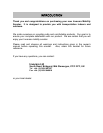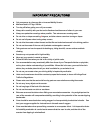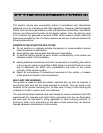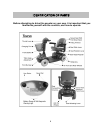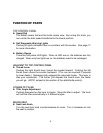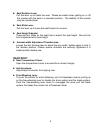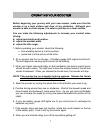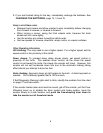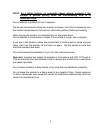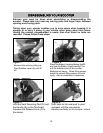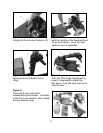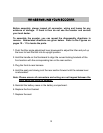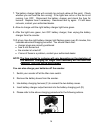8
9. If you are finished riding for the day, immediately recharge the batteries. See
CHARGING THE BATTERIES, page 13, 14 and 15.
K
K
K
e
e
e
e
e
e
p
p
p
i
i
i
n
n
n
m
m
m
i
i
i
n
n
n
d
d
d
t
t
t
h
h
h
e
e
e
s
s
s
e
e
e
r
r
r
u
u
u
l
l
l
e
e
e
s
s
s
:
:
:
x Release thumb levers and allow scooter to stop completely before changing
from forward to reverse, or reverse to forward.
x When turning a corner, swing the front wheels wide, because the back
wheels will turn more tightly.
x Use the scooter only where it would be safe to walk.
x Use low speeds for reverse, downhills, ramps, kerbs, or uneven surfaces.
O
O
O
t
t
t
h
h
h
e
e
e
r
r
r
O
O
O
p
p
p
e
e
e
r
r
r
a
a
a
t
t
t
i
i
i
n
n
n
g
g
g
I
I
I
n
n
n
f
f
f
o
o
o
r
r
r
m
m
m
a
a
a
t
t
t
i
i
i
o
o
o
n
n
n
Hill climbing: You may need to use a higher speed. For a higher speed, set the
speed control in the proximity of the rabbit.
Down slopes: To proceed down steep slopes slowly, set speed control in
proximity of the turtle. This enables driver control, as the closer the speed
control is set toward the turtle, the slower the scooter will travel. However, this
scooter will not self accelerate down hills due to the automatic braking taking
effect should you attempt to drive too fast.
Kerb climbing: Approach slowly at right angles to the kerb. A direct approach is
needed. Do not attempt greater than a 100 mm kerb.
If Self-Diagnostic Warning Lights start to blink, identify the problem from the chart
on page 17 and take action.
If the scooter breaks down and must be moved, get off the scooter, pull the Free-
Wheeling Lever up to disable the drive system and brake system, move the
scooter slowly to a safe location, and push the free-wheeling lever down to
take the scooter out of freewheel mode.




